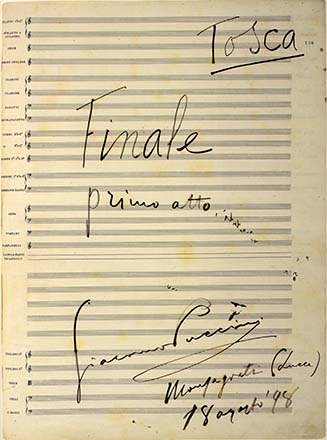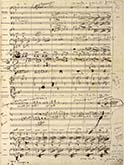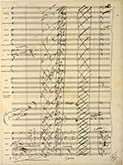Puccini's Tosca

This autograph manuscript of Giacomo Puccini’s opera Tosca, housed in the Casa Ricordi archives, provides us with a unique insight into the composer’s work, written in his own hand. We can see that he marked through errors, made changes and additions, and wrote notes to himself in the margins of the pages. Both the grueling process of operatic composition and Puccini’s perfectionist nature are made evident in the obsessive revising and polishing of the work, a musical gift that is treasured all the more for the effort that went into its creation.
This deluxe facsimile, one of a limited edition of 100 copies, presents Puccini’s work in three volumes, bound in quarter leather and featuring the lettering and ornaments of the original. Accompanied by a commentary that includes full-color reproductions of artwork, staging and costume designs from the earliest productions of Tosca, this facsimile is a superb addition to our collection.
(Click on each image to enlarge. Image will open in a new window.)





